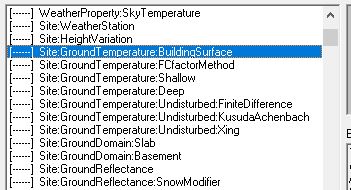How is my energyplus model calculating ground heat transfer if there is no Site:GroundTemperature object?
I am working with a model that was started in OpenStudio. I understand that Openstudio (for some reason) generates an IDF that uses 18C as a constant ground temperature under Site:GroundTemperature:BuildingSurface for calculating heat gain/loss through a floor slab. My intent had been to overwrite this for each month within this object in the IDF - to my surprise, there was no Site:Ground... object in the model at all leading me to the following 3 questions:
- How is my model running?
- How is ground heat transfer being calculated - is there some default when no object is specified in the model?
- On a broader note, why is this inaccuracy being forced in OpenStudio? Doesn't it prevent modelers from taking OS results at face value - forcing them to direct edit the IDF?





